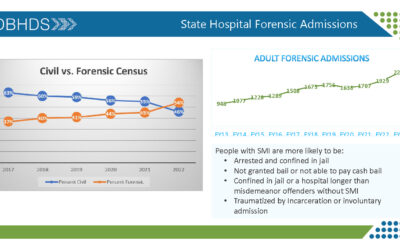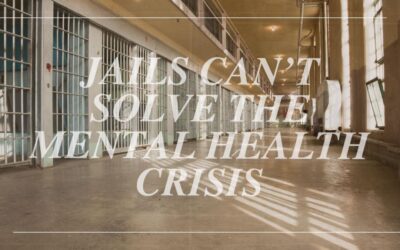#Black Lives Matter #Mentally Ill Lives Matter
Jewish Journal; Michelle K. Wolf, 12/11/2014
As protestors rightly call for reducing racial bias and improving police training in non-lethal methods to stop the needless deaths of unarmed black suspects, there’s another group of people that have been killed disproportionately by deadly police force –the mentally ill.
Two years ago, D. Brian Burghart, the editor and publisher of the Reno News & Review, launched FatalEncounters.org, an ambitious website to create “an impartial, comprehensive and searchable national database of people killed during interactions with law enforcement” since Jan. 1, 2000. Data comes from public records and also from crowdsourcing to update that database.
Burghart recently summed up what he has learned so far: “You know who dies in the most population-dense areas? Black men,” he wrote on Gawker. “You know who dies in the least population-dense areas? Mentally ill men. It’s not to say there aren’t dangerous and desperate criminals killed across the line. But African-Americans and the mentally ill people make up a huge percentage of people killed by police.”
The Treatment Advocacy Center and the National Sheriff’s Association estimate that at least half the people killed by police each year have mental health problems. Here’s some recent examples of people with mental illness who were killed in the course of an interaction with police officers:
On August 11, 2014 Ezell Ford, an unarmed 25-year-old Black man with mental issues was killed by two Los Angeles Police Department officers. Neighbors and local police officers knew that Ford was diagnosed with depression, his parents said, and later schizophrenia and bipolar disorder.
Ford was walking down the street in a tough area of town when the officers stopped their patrol car, exited the vehicle, and attempted to talk to Ford. According to the police report, “After looking in the officers’ direction, however, the individual continued walking and made suspicious movements, including attempting to conceal his hands.” A physical struggle ensued and both officers shot Ford. LA Mayor Eric Garcetti said Monday he expects the results of an autopsy on Ford’s body to be released by the end of December.
On June 16, 2014, a Dallas woman called 911 for assistance with her 39-year-old schizophrenic son, hoping that a specialized mental health team might take him to the hospital. Instead, two police officers showed up and shot Jason Harrison dead when he came out of the house. He was holding a screwdriver.
I have previously blogged about Kelly Thomas, who was an unarmed homeless man diagnosed with schizophrenia who lived on the streets of Fullerton, California. Police encountered Thomas after it was reported that he was rattling car doors in a parking garage and when he didn’t respond quickly to officers’ spoken requests, he was beaten and ultimately killed by Jay Cicinelli, Manuel Ramos, and Joseph Wolfe, three members of the Fullerton Police Department, on July 5, 2011. Thomas never regained consciousness, and died on July 10, 2011.
Why does this keep happening? There’s no question that police officers put their own lives on that “thin blue” line, everyday, in order to create safe places for us to live, and that they must make snap decisions in the heat of a the moment, but why do so many of these confrontations end up in death? Experts think it all boils down to the right type of training.
Back in April, 2014, The National Alliance on Mental Illness went on record asking for nationwide expansion of Crisis Intervention Teams (CIT) to reduce fatal events involving police and people living with mental illness. “CIT saves lives,” wrote NAMI Policy Director Ron Honberg and NAMI CIT Program Manager Laura Usher in testimony submitted to a U.S. Senate Judiciary subcommittee on the topic. “Police are often the first responders when a person is in psychiatric distress” said the NAMI testimony. “Every community owes it to them to provide the knowledge and training to handle mental health crisis situations safely and compassionately.”
Thank you to NYAPRS Enews for sharing this story!



